- The author relates the choice of Mahendragiri and Kulasekarapattinam to the Ramayana and thus explains ISRO’s choice of new launch stations in Tamil Nadu and advantages thereon.
India's space program, spearheaded by the Indian Space Research Organisation (ISRO), has made significant strides in recent years, establishing the nation as a key player in the global space industry. As part of its ambitious plans for the future, ISRO is gearing up to expand its launch capabilities by establishing new rocket launch sites in strategic locations.
Among these locations, Mahendragiri and Kulasekarapattinam in Tamil Nadu are two places, each offering unique advantages that could revolutionize India's space exploration projects.
Mahendragiri:
The Hub of Propulsion Excellence
Situated amidst the picturesque landscape of the Western Ghats, Mahendragiri is the epicenter of India's propulsion research and development activities. Home to ISRO's Liquid Propulsion Systems Centre (LPSC), Mahendragiri boasts state-of-the-art facilities for assembling and testing rocket engines under simulated ground-level conditions. The center's contributions have been instrumental in powering ISRO's Polar Satellite Launch Vehicle (PSLV) and Geosynchronous Satellite Launch Vehicle (GSLV) missions, earning it a reputation for excellence in propulsion technology.
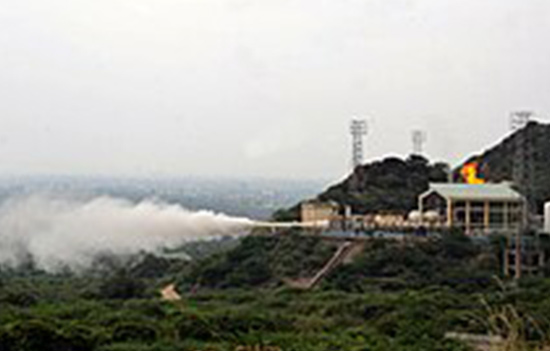
While Mahendragiri's mountainous terrain renders it unsuitable for rocket launches, its strategic location and expertise in propulsion make it an important asset to ISRO's mission planning and execution. (image courtesy Google Maps-with thanks)
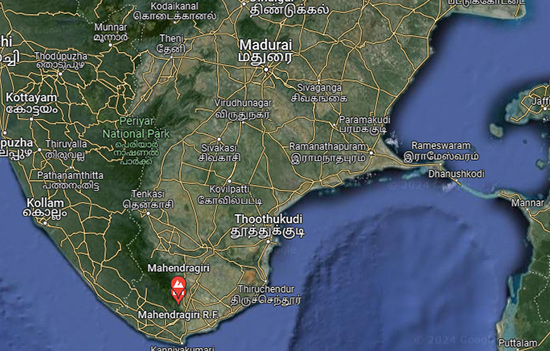
Kulasekarapattinam
On 28th February 2024, Prime Minister Narendra Modi laid the foundation stone for the ISRO second spaceport in Kulasekarapattinam, Tamil Nadu. This ambitious project, costing Rs 950 crore, marks a vital moment in India's space exploration journey.
The decision to
inaugurate the Thoothukudi Spaceport reflects ISRO's vision for expanding its launch infrastructure and harnessing the potential of India's vast knowledge resources for space exploration.
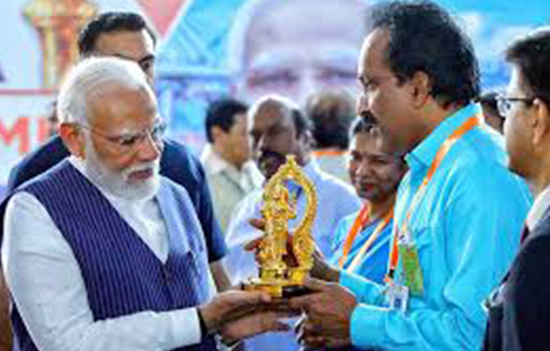
The geographical location of Kulasekarapattinam presents a multitude of advantages for ISRO's operations.
Situated along the east coast of India, the spaceport offers unobstructed access to the vast expanse of the Bay of Bengal, providing a clear trajectory for rocket launches and minimizing risks associated with over flight restrictions and populated areas. Unlike the existing launch site at Sriharikota, where rockets must perform complex maneuvers to avoid flying over Sri Lanka, Kulasekarapattinam's strategic positioning eliminates the need for such maneuvers, thereby conserving precious rocket fuel and streamlining launch procedures.
Moreover, Kulasekarapattinam's proximity to the equator offers enhanced efficiency for launching satellites into geostationary orbits, capitalizing on the Earth's rotational velocity to optimize payload capacity and mission success. This strategic advantage positions India as a competitive player in the global satellite launch market, offering cost-effective solutions for commercial and scientific payloads.
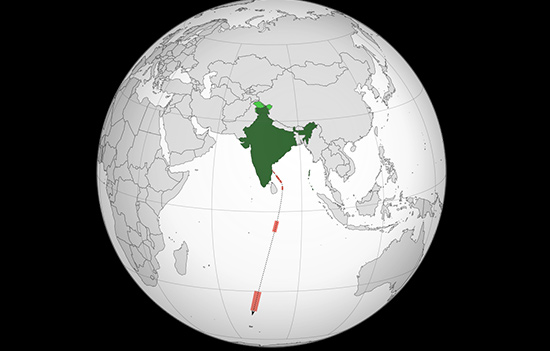
Mylswamy
Annadurai, former ISRO director, renowned scientist and known as the Moon Man of India, underscores the
transformative potential of Kulasekarapattinam as a launch site and space
manufacturing hub. In
a recent interview with etvbharat, Annadurai emphasized the strategic advantages of Kulasekarapattinam's coastal location and its pivotal role in streamlining launch operations and satellite deployment.
Looking ahead, ISRO envisions a future where Mahendragiri and Kulasekarapattinam serve as catalysts for scientific discovery, technological innovation, and economic growth. With ambitious plans to ramp up launch frequency and satellite deployment, India's space program is poised to scale new heights and redefine the boundaries of exploration and discovery.
It is not the
first time that Mahendragiri, located very close to Kulashekharapattinam is
witnessing a flight in sky. The first incident happened thousands of years ago,
in Treta yuga to be precise.
Mount
Mahendra in Srimad Ramayana
In the first Itihasa, Ramayana, Sage Valiki’s narrative immortalises along with the holy saga of Sri Rama, many other geographical locations such as Chitrakoota, Dandakaranya, Setu and many more spread all over Bharat. Among these, Mount Mahendra is the focus of this article.
Ramayana
recounts the epic journey of Lord Hanuman, as he sets on a perilous quest to
locate Mother Sita. It is from Mount Mahendra, as described in the sacred
verses, that Hanuman begins his awe-inspiring leap across the ocean, spanning
approximately 100 Yojanas in search
of Lanka, the fortress of king Ravana.
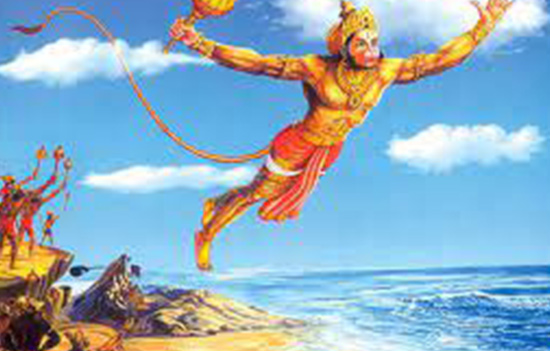
The identity of Mount Mahendra has been in question, with competing claims vying for recognition. One prevalent belief associates Mahendragiri in present-day Odisha with the illustrious mountain mentioned in Ramayana. Proponents of this theory point to the proximity of Odisha's Mahendragiri to Sri Lanka, approximating the aerial distance mentioned in the epic to validate their assertion.
However, a closer examination of Ramayana's verses proves otherwise. As Vanara King Sugreeva dispatched his troops in all directions to scour the land for any trace of Sita, his instructions delineated the vast expanse to the south of the Vindhyas, encompassing much of present-day Maharashtra and Odisha.
He says-
tato godāvarīm ramyām kṛṣṇāveṇīm mahānadīm |
varadām ca mahābhāgām mahoraga niṣevitām |
mekhalān utkalām caiva daśārṇa nagarāṇi api || 4-41-9
abravaṃtīm avaṃtīm ca sarvam eva anupaśyata |
vidarbhān ṛṣṭikān caiva ramyān māhiṣakān api || 4-41-10
Translated as, “Search the regions alongside the enchanting River Godavari, the mighty Krishna River, and the auspicious Varada River, revered by serpents. Explore the territories of Mekhala, Utkala, the cities of Dashaarna, and the regions of Abravanti, Avanti, and Vidarbha, as well as the captivating kingdom of Maheeshaka, with thorough scrutiny.”
Continuing his
narrative, Sugreeva directed the search towards Vanga and Kalinga territories,
extending to the fringes of Kaushika lands. Furthermore, he directs a
comprehensive search of the provinces of Andhra, Pundra, Chola, Pandya, and
Kerala.
Sugreeva tells
the Vanara warriors to keep going south until they reach a place called
Agasthya, which is a mountain range. He describes it as the locus of Sage
Agasthya, who shines brightly like the sun and sits atop the magnificent
mountain.
tasya āsīnam nagasya agre malayasya mahojasam || 4-41-15
drakṣyatha āditya saṃkāśam agastyam ṛṣi sattamam |
This place is
now called as Agasthyamalai in Tamil
Nadu. This location is important because it helps us figure out where Mt.
Mahendra is.
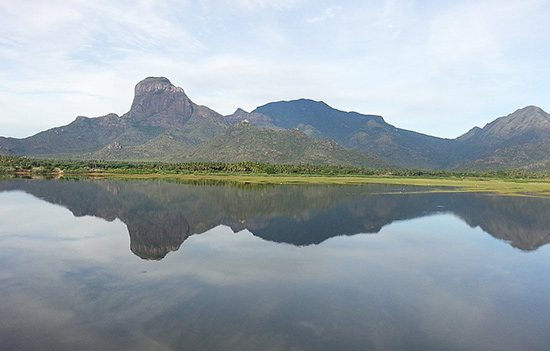
Sugreeva also mentioned a river called Taamraparni that flows near Agasthya's place. He said that when Agasthya gives them permission, they should cross the Taamraparni River-
tataḥ tena abhyanujñātāḥ prasannena mahātmanā || 4-41-16
tāmraparṇīm
grāha juṣṭām tariṣyatha mahānadīm |
It's fascinating because the Taamraparni River actually starts from the present-day Agasthyamalai, just like how Sugreeva describes.
After crossing the river, Sugreeva asks them to enter the Pandya Kingdom in the southern part of India. That's where they would find Mt. Mahendra.
tato
hemamayam divyam muktāmaṇi vibhūṣitam || 4-41-18
yuktam kavāṭam pāṇḍyānām gatā drakṣyatha vānarāḥ |
tataḥ samudram āsādya saṃpradhārya artha niścayam || 4-41-19
agastyena antare tatra sāgare viniveśitaḥ |
citra
sānu nagaḥ śrīmān mahendraḥ parvatottamaḥ || 4-41-20
The implications
of this revelation are profound.
Given that the Mahendragiri in Odisha doesn't match the details mentioned in the Ramayana, the question arises: where is Mt. Mahendra? Analyzing Sugreeva's descriptions provides a clear answer. Mt. Mahendra, which is said to be around 100 Yojanas away from Ravana’s Lanka, is situated at the southernmost tip of India. This contrasts with Odisha, which is positioned on the central-eastern side of the landmass.
Eventually, the
Vanara camp which went to the south, led by
Angada, comprising warriors like Jambavan and Hanuman, reached the
shores of the southern ocean as they headed in that direction. After debating
on who would cross the ocean to reach Lanka, it was decided that Hanuman would
undertake this challenging mission.
Hanuman prepared
himself for the task by growing in size and climbing the rocks of the
Mahendragiri Mountain. This mountain is also home to Thirukkurungudi Malai
Nambi Perumal Temple, considered to be one of the 108 Divya-Desams of Lord Vishnu. Read What
are Divya Desams
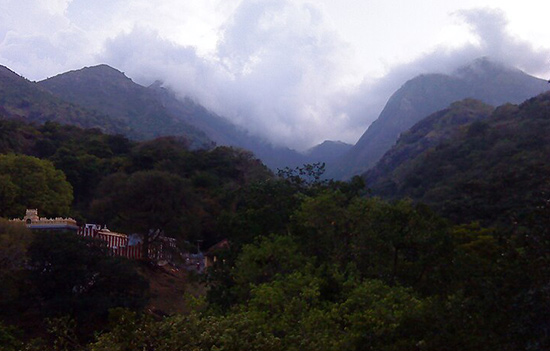
It was standing
atop Mahendragiri that Hanuman prepared to leap across the ocean with all his
might. The other Vanaras watched anxiously as Hanuman grew in size and ascended
to the top of the Mahendragiri mountain. They offered words of motivation and
encouragement in their own simple ways. And then, like a missile soaring through
the sky, Lord Hanuman streaked across the ocean at incredible speed.
khe
yathā nipatantyulkā hyuttarāntādviniḥsṛtā ||5-1-65
dṛśyate sānubandhā ca tathā sa kapikuñjaraḥ
The correlation
between the ancient site of Mount Mahendra and the modern-day ISRO launch pads
in Kulasekarapattinam is fascinating.
As depicted in the Sundarkanda of the Ramayana, Mount Mahendra served as the starting point for Hanuman's legendary flight across the ocean to Lanka in search of Sita. The proximity to the ocean provided Hanuman with an advantageous starting point for his transoceanic journey to Lanka. With the vast expanse of the sea stretching before him, Hanuman's leap from Mahendragiri was the first step in the glorious deeds that would be performed from this region.
To
read all articles by author
Author Dr Ketu Ramachandrasekhar is co-founder of
Bharat ke Wow and course developer at Siddhanta Knowledge Foundation. He is
also an expert panel member in Sangeet Natak Akademi. He has his Doctorate in
Indian Epistemology and was selected as a Fellow from hundred young scholars
across India for Studies in Neuro Aesthetics and Indian Rhetoric by Ministry of
Culture, GOI. He was a part of Academic Team of scholars across Europe on
discussion of Natya Texts. His expertise in Tantrashastra and Shaiva
Pratyabhijna School is well recognised. He has several research articles and
books to his credit which includes a detailed study of Abhinayadarpana of
Nandikeshvara, Devi Mahatmya and others.